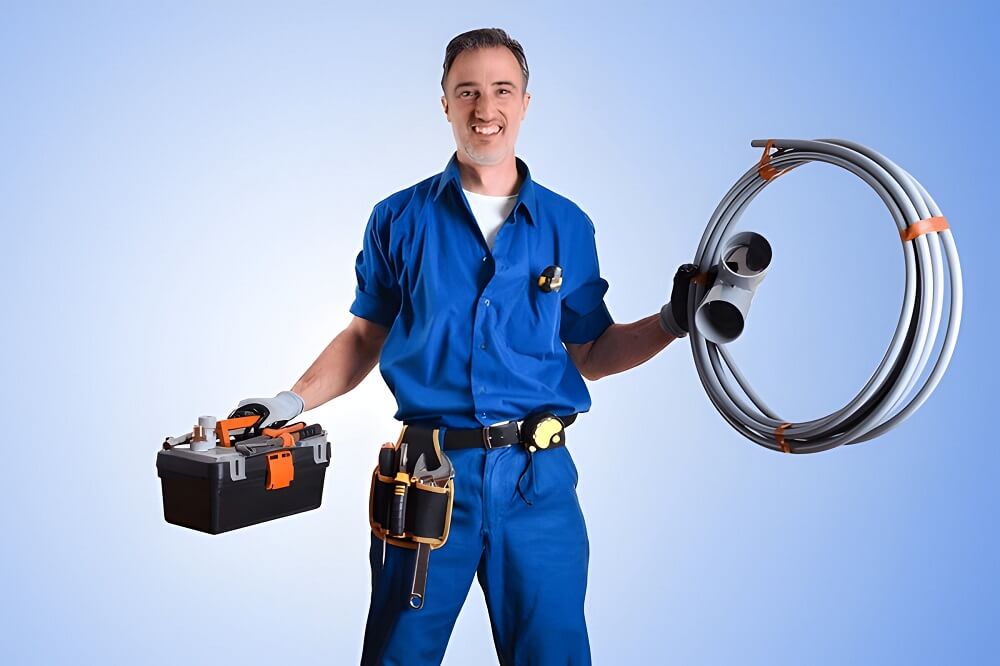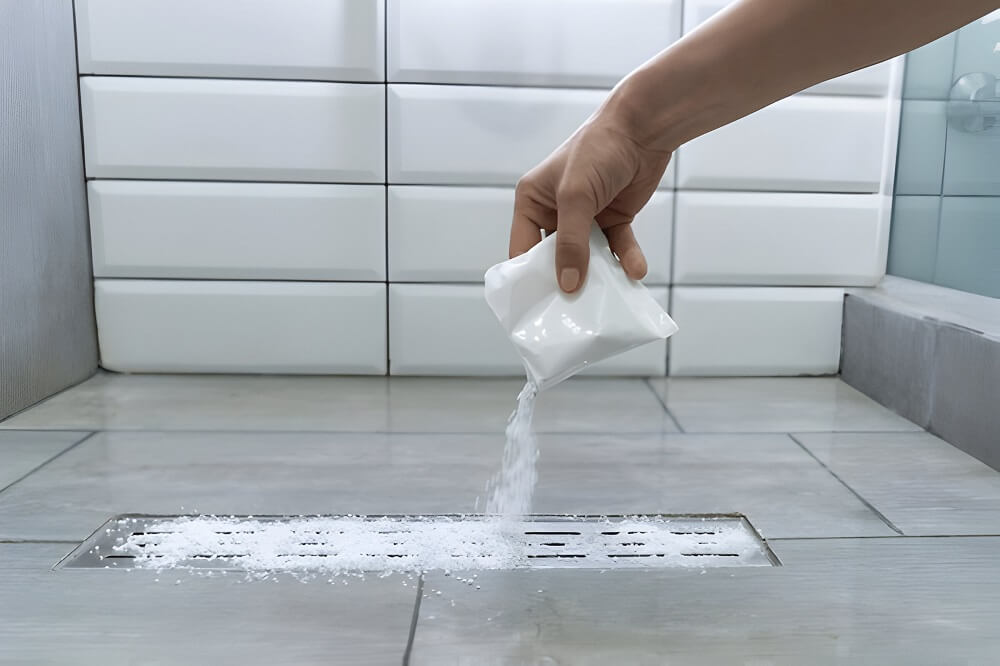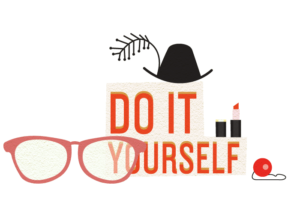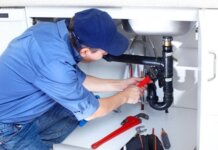Plumbers use a variety of tools and techniques to effectively unblock drains, tailored to the severity and nature of the blockage. Common manual tools include plungers and drain snakes, which are used for minor clogs.
For more stubborn or deep-seated blockages, mechanical equipment like motorized drain snakes and hydro-jetting machines are employed. Additionally, plumbers may use chemical drain cleaners, airburst drain cleaners, or bio-cleaning solutions depending on the situation.
In more complex cases, tools like CCTV drain inspection cameras and root removal equipment help diagnose and resolve blockages, ensuring the plumbing system is fully restored.
Manual Tools for Drain Unblocking
Manual tools are often the first line of defense against minor drain blockages. The most commonly used tool is the plunger, which operates by creating a vacuum that forces the blockage to move through the drain.
Plungers are particularly effective for clearing clogs in sinks, toilets, and showers. Another essential manual tool is the drain snake or auger, a flexible, coiled tool that can be inserted into the drain to break up and retrieve debris.
Augers are useful for blockages that are deeper in the plumbing system and cannot be dislodged by a plunger alone. These manual tools are simple yet effective for many household drain issues, providing a quick and often inexpensive solution.
Mechanical Drain Cleaning Equipment
When manual tools are insufficient, plumbers turn to more powerful mechanical drain cleaning equipment. One of the most common is the motorized drain snake, which is similar to the manual version but powered by an electric motor.
This allows the snake to extend further into the pipes and tackle more stubborn blockages. Another widely used piece of equipment is the rooter machine, designed specifically to cut through tough blockages such as tree roots that have invaded the sewer line.
These machines use rotating blades to clear the obstruction, ensuring the drain is fully cleared and functional again. Mechanical tools are essential for more severe blockages that require more force and precision than manual tools can provide.

Hydro-Jetting Technology
For the most challenging blockages, hydro-jetting is a highly effective method. This technology uses a high-pressure stream of water to blast away blockages and clean the inside of the pipes. Hydro-jetting is particularly useful for removing grease, scale, and other tough debris that can accumulate over time.
It is also effective for clearing tree roots and other organic material that may have infiltrated the pipes. The high-pressure water not only clears the blockage but also cleans the pipe walls, reducing the likelihood of future clogs. Hydro-jetting is a powerful and efficient method, but it requires professional equipment and expertise to ensure it is done safely and effectively.
CCTV Drain Inspection
Before and after clearing a blockage, plumbers often use CCTV drain inspection to assess the condition of the pipes. This technology involves inserting a small camera into the drain to provide a live video feed of the interior.
CCTV inspection helps plumbers accurately locate the blockage and identify any underlying issues, such as cracks, corrosion, or tree root intrusion. After the blockage is cleared, another inspection can confirm that the pipe is fully clean and undamaged.
CCTV drain inspection is invaluable for diagnosing and preventing further plumbing problems, offering a clear view of what’s happening inside the pipes.
Chemical Drain Cleaners
Chemical drain cleaners are sometimes used by plumbers to dissolve clogs, particularly those caused by organic materials like hair or grease. These cleaners typically contain strong acids or alkalis that break down the blockage, allowing it to be flushed away.
However, chemical drain cleaners can be harsh and potentially damaging to pipes, especially if used frequently. They are generally recommended for minor clogs and as a last resort before more invasive methods are employed. Plumbers use chemical cleaners with caution, balancing effectiveness with the potential risks to the plumbing system.

Airburst Drain Cleaners
Airburst drain cleaners use compressed air to forcefully clear blockages from drains. The device releases a powerful burst of air that pushes the blockage through the pipe, clearing the way for water to flow freely.
Airburst cleaners are effective for clearing minor clogs and are less invasive than mechanical methods. They are particularly useful in situations where a plunger or snake has failed to clear the drain. While not as commonly used as other methods, airburst drain cleaners provide a quick and non-chemical solution for certain types of blockages.
Bio-Cleaning Solutions
Bio-cleaning solutions offer an environmentally friendly alternative to chemical drain cleaners. These solutions use natural enzymes and bacteria to break down organic material in the drain, such as food particles, hair, and grease. Bio-cleaning solutions are safe for pipes and do not pose the same risks as harsh chemicals. They work more slowly than chemical cleaners but are effective for maintaining clear drains over time. Plumbers often recommend bio-cleaning solutions for regular maintenance, helping to prevent clogs from forming in the first place.
Root Removal Tools
When tree roots invade sewer lines, specialized root removal tools are required to clear the blockage. These tools often include cutting blades that rotate within the pipe to chop through the roots. Some root removal machines also use water jets to blast away smaller root fragments and flush them out of the system.
Removing tree roots is a delicate process, as it’s important to clear the blockage without damaging the pipe. Plumbers may also use chemical root inhibitors after clearing the roots to prevent regrowth and protect the pipes from future invasions.
Pipe Relining and Replacement
In cases where pipes are severely damaged or corroded, simple unblocking may not be sufficient. Pipe relining is a technique where a new lining is installed inside the existing pipe, effectively creating a new, durable inner layer without the need for excavation.
This method is less disruptive and more cost-effective than traditional pipe replacement. However, if the pipes are too damaged, pipe replacement may be necessary.
This involves removing the old pipe and installing a new one. Both methods require professional expertise to ensure the plumbing system is restored to optimal condition.
Preventative Maintenance Equipment
To avoid the need for frequent drain unblocking, preventative maintenance is key. Plumbers use various tools and products for this purpose, including pipe descalers, which remove mineral buildup from pipes, and drain guards, which prevent debris from entering the drain in the first place.
Regular maintenance helps to keep the plumbing system in good condition and reduces the likelihood of clogs and other issues. Plumbers may also recommend routine CCTV inspections to catch potential problems early and address them before they escalate.
These tools and methods highlight the diverse approaches plumbers take to tackle and prevent drain blockages, ensuring that plumbing systems remain functional and efficient.
Choosing Service Right for Blocked Drain Solutions in Sydney ensures you receive expert care from skilled professionals equipped with the latest tools and techniques. Whether it’s a simple blockage or a more complex issue, Service Right’s plumbers utilize advanced methods like hydro-jetting, CCTV inspections, and root removal to effectively clear your drains and restore your plumbing system to optimal condition. Their commitment to quality, transparency, and customer satisfaction makes them a trusted choice for handling any drain-related problems, ensuring peace of mind with every service. With Service Right, your drains are in capable hands.








